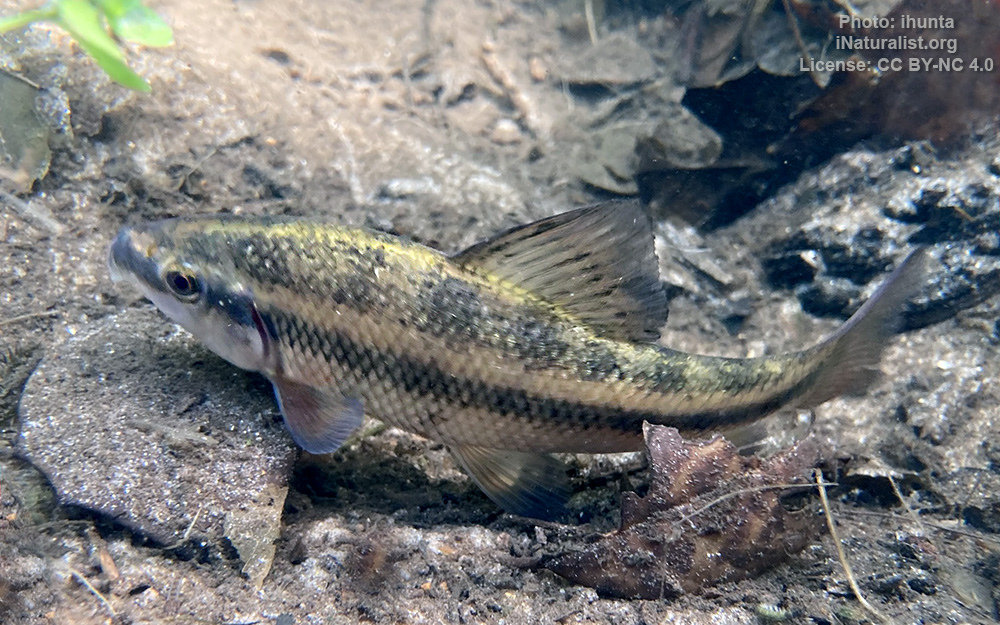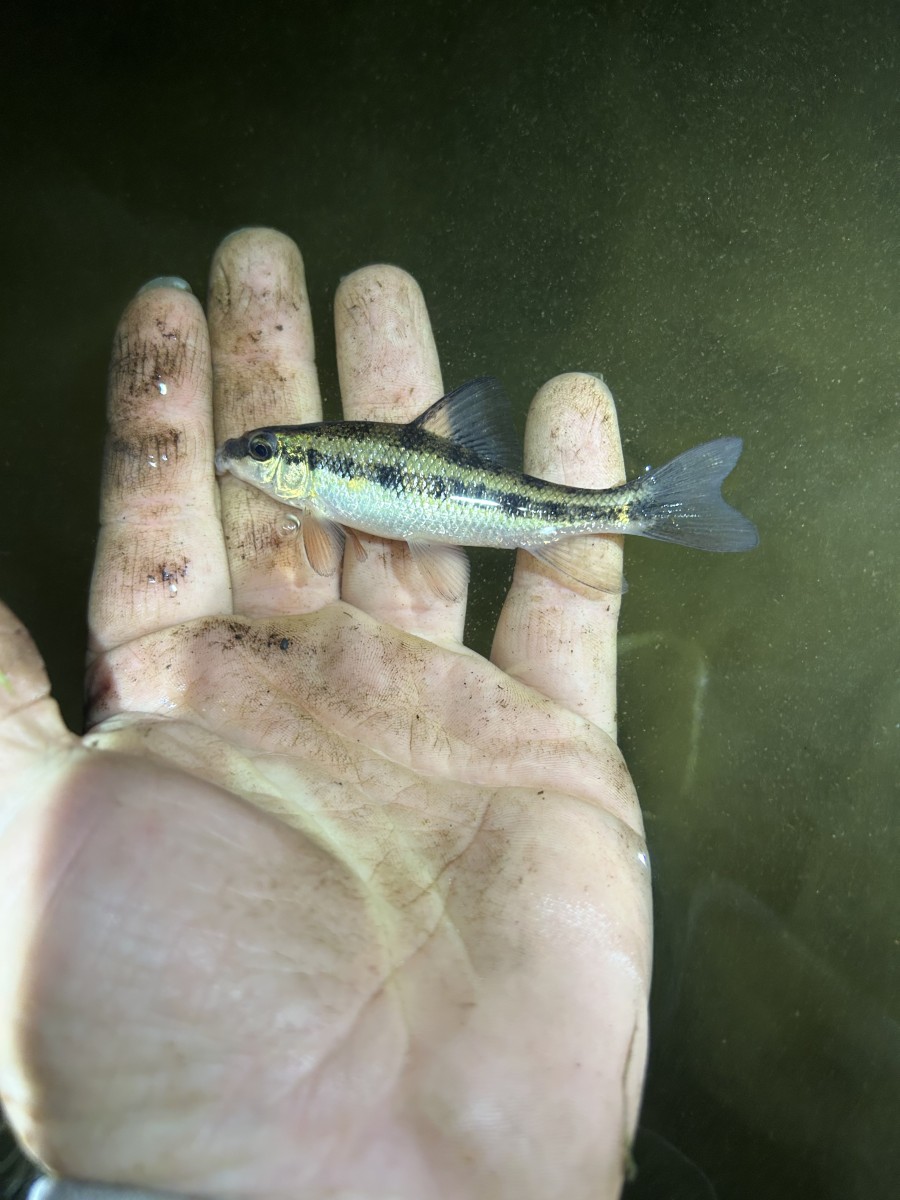Creek chubsucker
(Erimyzon oblongus)

Classification
General data
The creek chubsucker (Erimyzon oblongus) is a freshwater fish of the sucker family (Catostomidae).
The creek chubsucker is one of three species in the genus Erimyzon from the family Catostomidae present in eastern North America, and is found primarily in one of two disjunct populations; either in the eastern Coastal Plain streams or in the mid-western streams east of the Central Plains. The creek chubsucker is typically found in vegetated rocky riffle areas, runs, and pools of clear freshwater.
The creek chubsucker is small in size, typically measuring less than 10 inches (250 mm) and weighing slightly under a pound. There is generally no sexual dimorphism exhibited between males and females and lifespan is typically from five to seven years. However, dimorphism does exist between juveniles and adults, with juveniles displaying a uniform, dark lateral stripe down the sides.
Both sexes exhibit longitudinal scale rows, 4–18 dorsal fin rays, an air bladder with two chambers, dorsal fin base less than one-fourth standard length, and lateral line absent. During breeding, the males grow horn-like tubercles, become more brightly colored, and are territorial of gravel substrates in shallow water areas. The fish are bottom feeders and often turn over rocks when foraging on microcrustacea, aquatic insects, and some algae.
It is believed that the creek chubsucker and other members of the family Catostomidae diverged from minnows (Cyprinidae) at least fifty million years ago. The creek chubsucker is not considered a game fish, and is not commercially important to humans. Creek chubsucker young and eggs are considered important forage for piscivorous game fishes[ and are therefore important to the sustainability of these game fishes for recreational and sporting enthusiasts. As of 2004, the conservation status of creek chubsucker was of least concern, but the species is still adversely affected by anthropogenic factors such as dams, pollution, and over siltation.
Geographic distribution
Creek chubsuckers are one of about sixty-two species of in the family Catostomidae. All but two species are endemic to North America, and creek chubsuckers can be found in many of the freshwater tributaries of the Atlantic slope streams from Maine to Altamaha drainage of Georgia; Gulf slope streams east to Escambia River drainage, Alabama (single population), west to San Jacinto system Texas, Mississippi Valley in Louisiana, Arkansas, southeast Oklahoma, upland Missouri, Mississippi, west Tennessee, West Kentucky, and south of the Great Lakes drainage in southern tributaries to lakes Michigan, Erie, and Ontario.
There is a disjunction between the eastern and western populations with no records of the species being present in the waterways from Florida northward along the Appalachian Mountain corridor. The creek chubsucker adults occur commonly in pools in sluggish streams, spring pools, and backwater areas, while juveniles can be found in head water rivulets. During the breeding season, congregations of breeding males and females migrate upstream and, can be found on clean rubble or gravel beds and less commonly on sandy or vegetated shallow water beds. Some populations are in decline where siltation pollution is evident.












